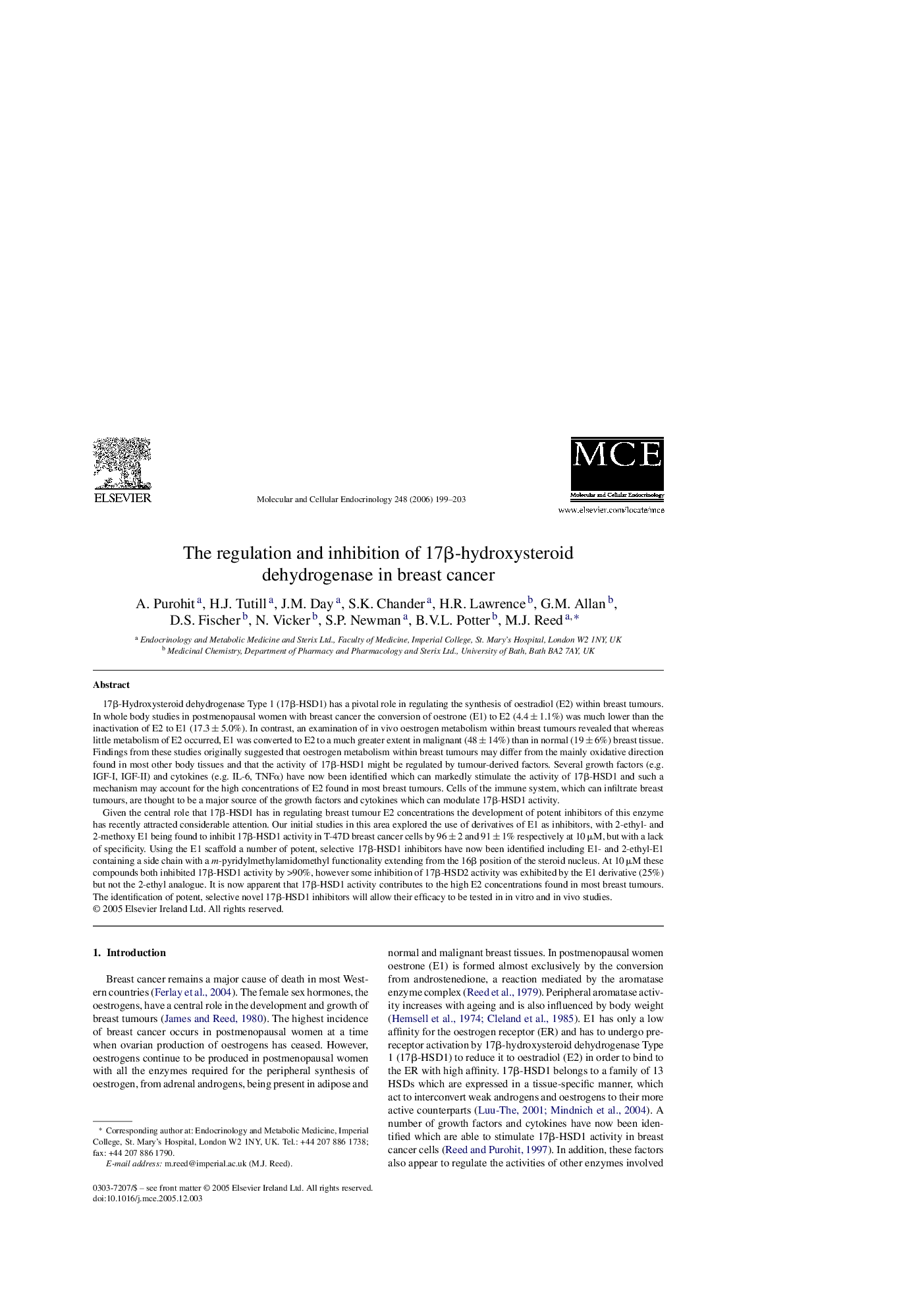| کد مقاله | کد نشریه | سال انتشار | مقاله انگلیسی | نسخه تمام متن |
|---|---|---|---|---|
| 2198338 | 1551009 | 2006 | 5 صفحه PDF | دانلود رایگان |

17β-Hydroxysteroid dehydrogenase Type 1 (17β-HSD1) has a pivotal role in regulating the synthesis of oestradiol (E2) within breast tumours. In whole body studies in postmenopausal women with breast cancer the conversion of oestrone (E1) to E2 (4.4 ± 1.1%) was much lower than the inactivation of E2 to E1 (17.3 ± 5.0%). In contrast, an examination of in vivo oestrogen metabolism within breast tumours revealed that whereas little metabolism of E2 occurred, E1 was converted to E2 to a much greater extent in malignant (48 ± 14%) than in normal (19 ± 6%) breast tissue. Findings from these studies originally suggested that oestrogen metabolism within breast tumours may differ from the mainly oxidative direction found in most other body tissues and that the activity of 17β-HSD1 might be regulated by tumour-derived factors. Several growth factors (e.g. IGF-I, IGF-II) and cytokines (e.g. IL-6, TNFα) have now been identified which can markedly stimulate the activity of 17β-HSD1 and such a mechanism may account for the high concentrations of E2 found in most breast tumours. Cells of the immune system, which can infiltrate breast tumours, are thought to be a major source of the growth factors and cytokines which can modulate 17β-HSD1 activity.Given the central role that 17β-HSD1 has in regulating breast tumour E2 concentrations the development of potent inhibitors of this enzyme has recently attracted considerable attention. Our initial studies in this area explored the use of derivatives of E1 as inhibitors, with 2-ethyl- and 2-methoxy E1 being found to inhibit 17β-HSD1 activity in T-47D breast cancer cells by 96 ± 2 and 91 ± 1% respectively at 10 μM, but with a lack of specificity. Using the E1 scaffold a number of potent, selective 17β-HSD1 inhibitors have now been identified including E1- and 2-ethyl-E1 containing a side chain with a m-pyridylmethylamidomethyl functionality extending from the 16β position of the steroid nucleus. At 10 μM these compounds both inhibited 17β-HSD1 activity by >90%, however some inhibition of 17β-HSD2 activity was exhibited by the E1 derivative (25%) but not the 2-ethyl analogue. It is now apparent that 17β-HSD1 activity contributes to the high E2 concentrations found in most breast tumours. The identification of potent, selective novel 17β-HSD1 inhibitors will allow their efficacy to be tested in in vitro and in vivo studies.
Journal: Molecular and Cellular Endocrinology - Volume 248, Issues 1–2, 27 March 2006, Pages 199–203